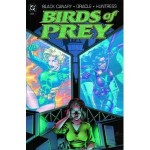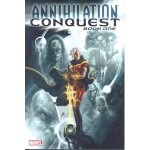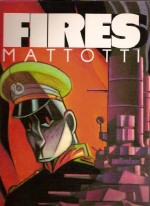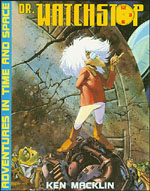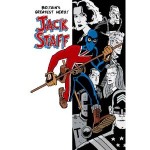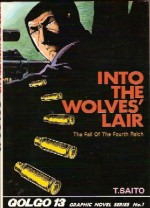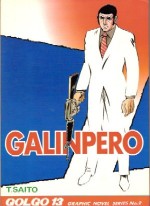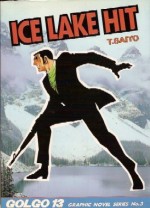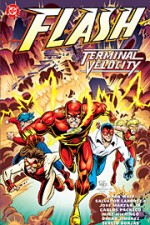
By various (WildStorm/Titan Books)
ISBN: 978-1-84576-706-8
Some people are never satisfied. When I was a kid constantly defending or even hiding my reading preferences, I and so many others, used to dream of a day when “normal†people – especially grown-ups and girls – would appreciate and love the superheroes, pulp fiction and space-opera that we devoured in comics. One day, I muttered, they’ll get it too…
These days not only are the concepts and traditions of my childhood inamoratas common currency, but actual favourite characters have been shared with the general populace to such a broad extent and with such ruthless commercial interpretation that often I can’t recognise the cheery costumed champions I once longed for others to partake of…
The world’s Batman isn’t mine, the celluloid (do we even use celluloid anymore?) Spider-Man is a complete stranger and I won’t have Daredevil or the X-Men in my house… Moreover I cringe inside when “the comicbook plot†appears in any cop or fantasy show: Nobody in the industry actually considers themselves “graphic novelists†– nobody I know would be that poncey…
So I was understandably a little nervous when a prime-time TV series debuted steeped in the fictive concepts of meta-humanity and attempted to bring the fringe experience and continuity shenanigans of the empowered outsider to the wider audience of soap fans and armchair sportsmen…
Tim Kring’s pedigree is admittedly quite good. He has worked extensively with fantasy concepts and clever adventure heroes on TV: Knight Rider, Strange World, Crossing Jordan, Teen Wolf Too (which he co-wrote with long-time collaborator Jeph Loeb) and the spectacularly under-appreciated Misfits of Science, an earlier and wittily cool attempt at a silver screen super-team.
Heroes ran for four controversial seasons, beginning in 2006, initially garnering huge audience figures and critical acclaim but gradually tapering off in popularity and direction before being finally euthanised by NBC in February 2010.
Recounting the secret history and evolution of a broad and disparate offshoot of superhumans amongst us the series attempted to transfer comicbook sensibilities to the television audience, following up to dozen separate metahumans as they came to terms with their abilities in a dangerously out of kilter world.
An overarching narrative thread was provided by Indian scientist Mohinder Suresh who had inherited his dead biologist father’s secret research into and fascination with these hidden but rapidly evolving beings, whilst constant menace was provided by a covert organisation hunting the paranormals and a rogue superhuman dubbed Sylar, who also stalked them – but only to kill them and steal their powers.
The concept’s lowly pop culture origins were coyly and constantly referenced in the show by including a meta-fictional comic, Ninth Wonder, written and drawn by a future-gazing character, into the ongoing plots. There was also a weekly webcomic produced to supplement the series and those webisodes are compiled in this book, comprising a stream of sidebar stories to enhance the overall experience, crafted by some of our industry’s leading talents.
Obviously if you never saw or didn’t like the show this would be the time to stop reading this review, but as I’m going to carry on regardless feel free to accompany me as I attempt to weigh the merits of the comics strips collection on its own terms…
Numbered as Ninth Wonder #1-34 these short stories – averaging 4-6 pages and a cover per instalment – begin with ‘Monsters’ by Aron Eli Coleite and artists Michael Turner & Koi Turnbull, wherein Mohinder moves to America, reintroducing the core concepts to us whilst investigating his father’s death, after which time-bending Japanese salaryman Hiro offers a peek into his own past with ‘The Crane’ by Coleite, Micah Gunnell & Mark Roslan.
Flying politician Nathan Petrelli experiences an eye-opening ‘Trial by Fire’ (Chuck Kim, Marcus To & Roslan)’ whilst invulnerable cheerleader Claire realises how much her life has changed after teaching a date-rapist a brutal lesson in ‘Aftermath’ (Joe Pokaski, Gunnell & Roslan). In ‘Snapshot’ by Pokaski, To & Peter Steigerwald, intangible convict DL Sanders breaks out of jail, unaware that his wife Niki is also abhuman and currently beginning a part-time career as a violent criminal in ‘Stolen Time’ (Pokaski, To & Roslan)…
Telepathic cop Matt Parkman feels his orderly life slipping away in ‘Control’ (Oliver Grigsby, Gunnell & Roslan) and that aforementioned precog artist discovers his powers in Coleite, Gunnell & Roslan’s ‘Isaac’s First Time’. Then Pierluigi Cothran, To & Roslan introduce a very special, irresistible little girl in ‘Life Before Eden’.
The tenth episode featured the sinister Sylar in ‘Turning Point’ (Christopher Zatta, Gunnell & Roslan), we got a look into the life of the chief agent hunting paranormals in ‘Fathers and Daughters’ (Andrew Chambliss, Travis Kotzebue, Gunnell & Steigerwald), power-magnet Peter Petrelli dreamed of ‘Super-Heroics’ (Harrison Wilcox, Gunnell & Steigerwald) before the format got an overdue upgrade with a continued story and an all new character.
‘Wireless’ (Coleite, Pokaski, Gunnell, Phil Jimenez & Roslan) introduced Israeli soldier Hana Gitelman who had the ability to interact with computers and electronic data-streams and recounted how she was recruited by the agency that hunts Heroes, a four-part tale of frustrated vengeance, fraud and disillusionment, followed in #17-18 with ‘How Do You Stop an Exploding Man?’ (Jesse Alexander, Coleite, Travis & Jordan Kotzebue & Roslan) as Hana tracks down the tragic Ted Sprague, fugitive paranormal cursed with the ability to explode like a nuke…
DL and Niki have a son and little Micah also has an ability – controlling machinery, but that’s not a great deal of help in ‘Bully’ (Kim, Gunnell & Roslan), whilst Sylar experiences a setback of his own in ‘Road Kill’ (Pokaski & Jason Badower). Hana returns in ‘The Path of the Righteous’ (Coleite & Staz Johnson), protecting the innocent from internet predators whilst cheerleader Claire’s unorthodox adoption is examined in Jesse Alexander & Michael Gaydos’ ‘Hell’s Angel’.
Episode #23 ‘Family Man’ (Alexander & Staz Johnson) deals with the aftermath of Claire’s exposure as a metahuman as her adoptive father, chief agent for the organisation that hunts her kind, makes a life changing decision, before another extended saga opens with ‘War Buddies: The Lonestar File’ (Mark Warshaw & Steven Lejeune).
Deep undercover Hana discovers the story of a previous generation of superhumans in ‘Unknown Soldiers’ (Chambliss, Cothran, DJ Doyle, Wilcox, Adam Archer, Roslan & Badower) detailing the story of a special ops mission in the Mekong Delta in 1968.
After incalculable horror the two survivors of the US team realise they are both more than mortal and lay plans that will eventually shake the world: a scheme that comes closer to fruition in ‘War Buddies: Call to Arms’ (Warshaw & Johnson)…
Time traveler Hiro Nakamura meets himself in the portentous ‘String Theory’ (Pokaski & Johnson) and events spiral to a climax – or more accurately Season Finale – with the 2 parter ‘Walls’ from Pokaski, Tom Grummett & Gaydos, as the heroes of a possible future strive to change their past. This volume then closes with a final 2-part thriller ‘The Death of Hana Gitelman’ by Coleite & Badower. It’s not what you think…
The book also contains a number of extra text features, the webisode covers and TV show art by Tim Sale and others such as Jim Lee and Alex Ross and despite my initial misgivings does actually present a fairly cohesive picture that most readers should enjoy and appreciate even with no prior experience of the primary material. And of course with Boxed set DVDs make ideal presents – almost as good as graphic novels, in fact…
© 2007 Universal Studios. Heroes is ™ & © NBC Studios, Inc. All rights reserved.


